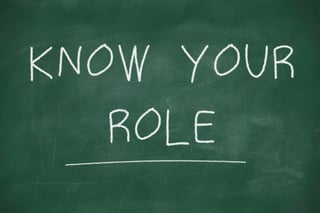I love what I do for a living. I meet the most incredible people who are building amazing  companies. Most recently, I was sharing this observation with a client CEO and he responded with, “Well, if I could only do it without people!” I had to laugh.
companies. Most recently, I was sharing this observation with a client CEO and he responded with, “Well, if I could only do it without people!” I had to laugh.
The “problem with people” is pervasive. After all, a single human being is complex. Multiply that by a lot of human beings (aka, your employees), and you can have one huge complicated hairball of an organization. So how do you get to this thing called, “High Performance?” Indeed, the Path of Progress toward high performance is a journey. Let’s focus, though, on how to begin the journey of accountability in the workplace to drive team performance and help you achieve your goals.
The road to high performing teams is a series of conversations—lots of them. You might think people should just know what to do; they don’t. Don’t force your people to "guestimate" what you want them to do. It’s a leader’s job to set clear expectations and serve as an accountability coach to their people. So the road to high performance is powered by the power of personal accountability with all of your team members and having a clearly defined leadership accountability model to reach your long term strategic plans. If you want to begin holding others accountable, you need to start with yourself.
One simple technique for building personal accountability is called the “QBQ.” The QBQ is a terrific and powerful technique that helps you help those around you. It was first popularized by John G. Miller in his book, The QBQ: The Question Behind the Question. Let’s take a look at how this little, but powerful, technique can help you begin building a sense of personal accountability.
If you have a high performance organization, you have a collection of individuals who understand and accept personal accountability. Without personal accountability, there can be no team culture of accountability. The key, then, is coaching people to begin thinking for themselves (vs. spoon-feeding them). Instead of telling people what you need them to do or what you want them to do or how you want them to do it, coach them to come up with their own solutions and strategies. Along the way, you’ll also begin building higher-level critical thinking skills as well (which is so lacking in many organizations) and be more likely to achieve your desired results. Therefore long term accountability culture is defined not just by goal setting, but how you coach people to reach your goal. If you've created a culture of accountability and transparency, you're well on your way.
The QBQ Model
A QBQ is a question that follows these two guidelines:
- The question begins with “What” or “How” (Suggestion: Get really good at this.)
- The question includes a pronoun (such as “I”, or “we”, or “you”). (Suggestion: Use discernment here. Which pronoun to include depends on the situation. Sometimes, “What might 'we' do to change this situation?” is right. Other times, it might better be stated, “What might 'you' do to change this situation?” Remember: “You” can be as if you’re pointing a finger at someone. Use it when needed, especially if the person just isn’t accepting personal accountability.)
The Result: You move the problem-solving to the person; you shift it away from you and you’re coaching the individual to create his/her own potential solutions to drive personal and team accountability.
Sample Scenario
Let’s look at an example. George is your head of IT. He’s been with your organization for almost one year. He’s a great guy, but he’s a hard driver. He stomps on everybody’s territory, although he probably doesn’t really mean to do that. He’s very smart (you couldn’t have hired anyone better). Challenges are beginning to emerge, though, relative to George. You notice that his leadership team peers simply don’t see him as a resource because he talks “above” everyone. There’s a rumble amongst his IT staff; they just don’t even like to approach him. Half the time he gives someone a job to do and he ends up butting in to the point that he does it himself. Recently, the leadership team had a meeting where George was to present a solution to a big organization-wide IT problem. In typical George fashion, he was arrogant, flippant, and speaking in technical terms versus using general analogies and words so that he could be better understood. In the end, no one sees a solution at all. They see complexity. And during the meeting, he "barked" at Fred when Fred asked a clarifying question.
At this point, you (the wise leader) realize that this is all your fault. You’ve tried to talk to George. You’ve told him more than once that he might want to think about interfacing with his colleagues a bit differently. Of course, he always nods his head in agreement or he scoffs and just ends up mumbling something as he walks off. Nothing changes. So how do you get George to “get it?” How can you coach him toward accepting personal accountability for how he interacts with the leadership team (and with his own team!)? One solution: Incorporate the use of open-ended questions into your conversation with George following the QBQ model.
The Conversation: Building “Personal Accountability”
First, of course you want to set the stage for your one-on-one conversation with George. Therefore, share your observations with George. Second, ask him for his thoughts, and listen. Finally, you want to shift toward guiding George to create his own solution to the challenges you see. Begin this phase of your conversation; then, put the ball in his court with a question that bounces off of something he said as you listened to his side of the story.
So let’s say somewhere in George’s response he says: “IT is complicated! Of course people don’t understand what I’m saying. It’s a field that takes a great deal of expertise! They should just trust me and know that even if they don’t understand what I’m saying, I am nonetheless solving the problem! I do my job, you know….”
Team Accountability Question Examples
Note: The questions you use depend on how the conversation unfolds. However, these are some sample questions for your toolkit.
- Indeed, IT is complicated. So how might you go about making it uncomplicated for the team?
- What specific solution did you intend to reveal to the team? How might you state that more clearly?
- How can you more effectively answer a question when it’s asked? How might you have better responded to Fred’s question?
- What can you do to increase your communication effectiveness?
- What are some ways you can more effectively communicate with your own IT team?
- How might you build the trust you feel others should have in you?
- What are some ideas for how other people can understand what you’re trying to tell them?
- What resources might you need to help with your solution?
- How can you ask for the team’s involvement?
- What do you think would increase the team’s understanding of your suggested solution? What can you do differently to give them a firmer grasp of what the exact solution is that you’re suggesting? What tools might you use to convey your key points?
- What can you do so that others better perceive you as a team player? How might you do that?
- How can I be a resource for you?
- I see that this is frustrating you. What might lessen your frustration?
- What role might you play in the frustration of others? What can you do differently?
- How can our meeting structure be changed to better give you the time you need to prepare?
- How might you outline your desired outcomes for the team?
- Yes, I think we all know you work hard and have tremendous expertise. However, what can you do to better communicate with everyone involved?
- What was the goal of your Leadership Team presentation?
- What might you begin to do differently so that the Leadership Team better “sees” the solution you’re suggesting?
- What is it, then, that might be getting in the way of your ability to communicate a solution? What might you do about that? How will you do better next time?
- How are you going to go about getting this done by the end of this quarter? What needs to shift?
- What might move the needle in the right direction? What might be some key indicators that the team understands your suggested solution?
- How do you think you and your IT Team might better serve the organization?
- What can you delegate to others? How might you go about that delegation so people don’t feel "dumped" on? How might their own workloads shift? What are the implications of that shift?
The questions are endless. The main point is this: Keep asking questions that begin with “What” and “How.” If your question doesn’t get answered, repeat it. Then, if needed, repeat it again. See additional accountability examples.
Team Accountability vs Personal Accountability Video
In the end, sum up the conversation for clarity. For instance:
- So, what did we decide today? …or…
- What three things are you going to do by the end of the quarter?
- How can I be a resource for you?, or, What do you need from me?, or, How can I support you?
Cultivating team accountability is hard work, but it starts at the individual level. As a leader, it requires your time, energy, and pure leadership. The journey to building team accountability, though, begins at the individual level.
And along the way, don’t forget to have an accountability discussion with yourself, too. It all begins with you.
Want more information on Team Accountability? Check out these additional resources:
Take Our Team Accountability Assessment
The Five C's of Team Accountability
Team Accountability Begins with Personal Accountability
Building Team Accountability: Job Scorecards
10 Signs of an Accountable Culture [Infographic]
Growing Accountability in Your Organization
Quick Tips for Building Accountability
5 Steps to Having an Accountability Discussion [Video]
Learn more about accountable leaders and teams.
Photo Credit: iStock by Getty Images
Photo Credit: iStock by Getty Images



 LinkedIn
LinkedIn
 Facebook
Facebook
